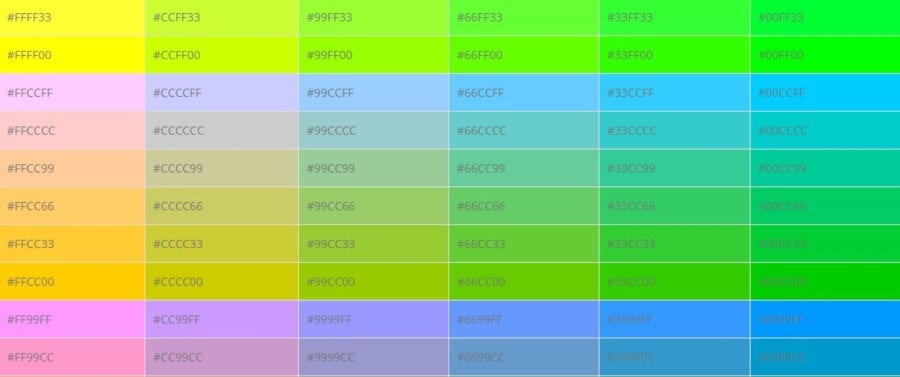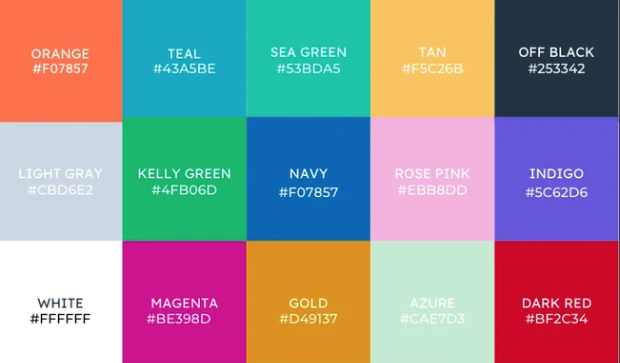In the dynamic world of web design, the use of colors is a crucial element that significantly impacts user experience. One widely adopted method for representing colors on the web is through hexadecimal codes, commonly known as hex codes. This article will delve into the world of web colors, demystifying hex codes and exploring their significance in creating visually appealing and harmonious digital experiences.
The Basics of Web Colors: Adding Life to the Digital Canvas
Web colors play a pivotal role in shaping the visual appeal of websites, applications, and digital content. These colors are represented using a combination of red, green, and blue (RGB) values. The vast spectrum of colors that can be produced by adjusting these values allows designers to create captivating and aesthetically pleasing interfaces. However, the challenge lies in maintaining consistency across different devices and browsers, which is where hex codes come into play.
Hexadecimal Codes: The Universal Language of Color Representation
Hexidecimal codes, short for hexadecimal codes, offer a standardized method for representing RGB color values. Consisting of six characters, these alphanumeric codes encode the intensity of red, green, and blue in a color. For example, #FF0000 represents pure red, while #00FF00 signifies pure green. Hex codes provide a universal language for designers and developers, ensuring that colors appear consistently across various platforms and browsers.

Understanding the Hexadecimal System: From Decimal to Hex
To comprehend hex codes, it’s essential to grasp the hexadecimal numbering system. While the decimal system uses base 10, hexadecimal is base 16, incorporating both numbers (0-9) and letters (A-F). Each pair of characters in a hex code corresponds to one of the RGB color channels. For instance, #1A2B3C translates to red: 1A, green: 2B, and blue: 3C. This system simplifies color representation and allows for concise communication among designers and developers.
Hex Codes in CSS: Applying Colors with Precision
Cascading Style Sheets (CSS) is the language used to define the presentation of web pages. Hexadecimal codes seamlessly integrate with CSS, enabling designers to apply precise colors to elements. Whether defining the background of a section or specifying the text color, using hex codes ensures accuracy and consistency in rendering colors across different devices and browsers. This precision is crucial for creating cohesive and visually appealing web designs.
Color Harmony and Contrast: Achieving Visual Balance
The effectiveness of web design relies heavily on achieving color harmony and contrast. Hexadecimal codes empower designers to select colors that complement each other, creating a visually balanced and pleasing aesthetic. Tools and resources are available to help designers explore color palettes, ensuring that hex codes are chosen strategically to convey the desired emotions and enhance the overall user experience.
Accessibility: Ensuring Inclusivity in Design
An often overlooked aspect of web design is accessibility, and color choices play a crucial role in ensuring inclusivity. Hex codes allow designers to select color combinations that meet accessibility standards, making content readable for users with visual impairments. By considering contrast ratios and choosing colors thoughtfully, designers can create websites that are not only visually appealing but also accessible to a broader audience.
Responsive Design and Hexadecimal Codes: Adapting to Various Devices
In the era of diverse digital devices, responsive design is imperative. Hex codes contribute to responsive design by ensuring that colors adapt seamlessly across different screen sizes and resolutions. This adaptability is essential for maintaining a consistent and visually pleasing user experience, regardless of whether a website is viewed on a desktop, tablet, or smartphone.
Color Psychology: Evoking Emotions and Enhancing UX
Colors evoke emotions and influence user behavior, a concept well-studied in color psychology. Hexadecimal codes empower designers to leverage the psychological impact of colors, selecting hues that resonate with the brand identity and the intended message. From calming blues to energetic reds, the strategic use of hex codes contributes to a positive and engaging user experience.
Conclusion
In the realm of web design, hex codes serve as the linchpin for achieving consistency, precision, and visual appeal. From representing RGB values to facilitating color choices in CSS, understanding hex codes is crucial for designers and developers alike. As the digital landscape continues to evolve, mastering the art of using hex codes empowers creators to craft immersive and visually stunning web experiences that resonate with users across diverse platforms and devices.

